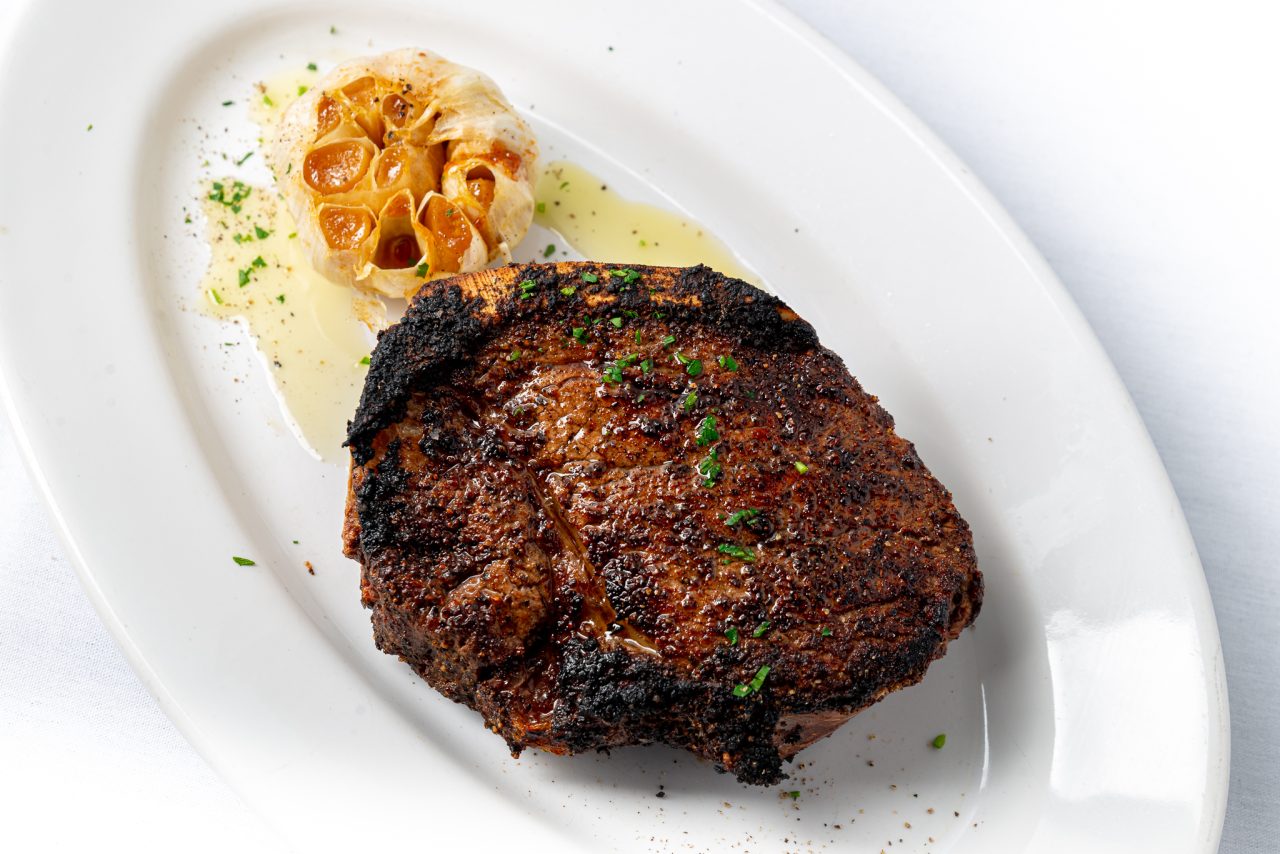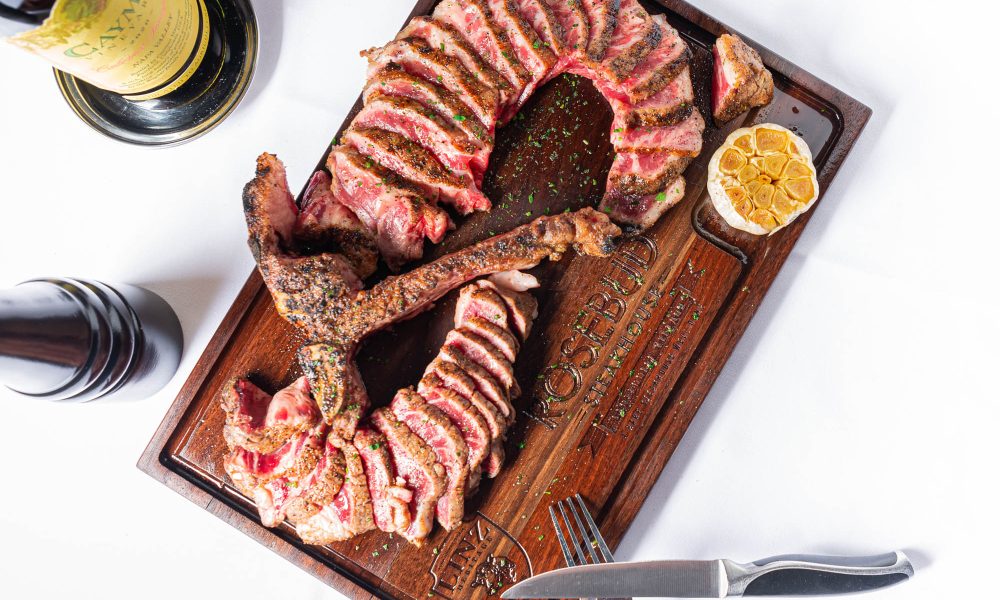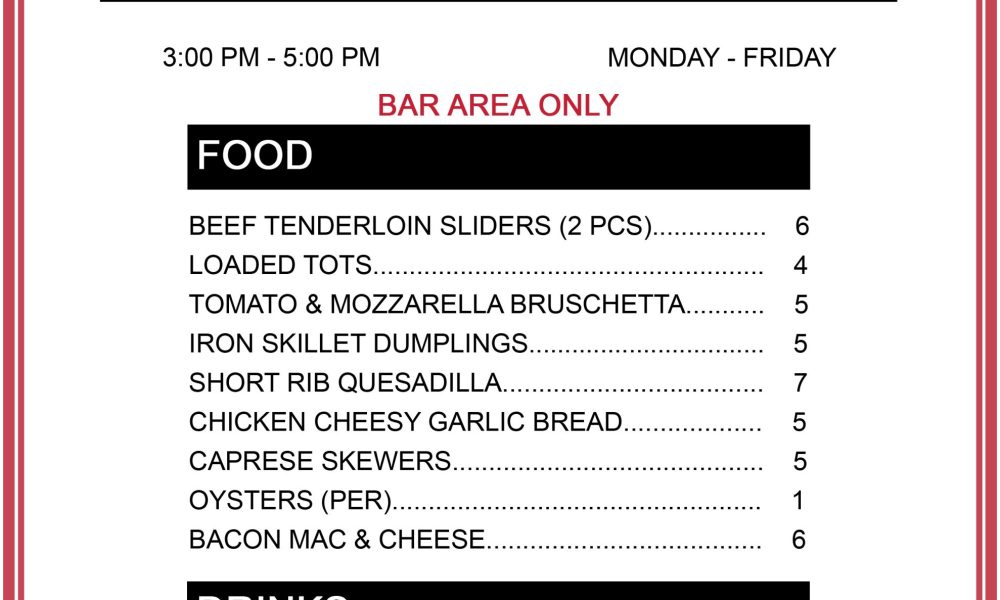What Is Steak Temperature and Why Is It Important?
Steak temperature, which is an internal temperature of the meat that indicates the degree to which it has been cooked, is one such indicator. An estimated summary of the temperature levels is presented here ranging from rare to well done; while there are other internal cooking temperatures for achieving these various levels. This temperature influences both the flavor and juiciness along with the texture of a steak piece.
For that reason, if you desire a steak cooked to your own satisfaction, having the correct doneness temperature is key. Overdone or underdone, beef can end up being rock-hard, dry as dust, or raw inside. Knowing the temperatures will help you prepare the steak properly while taking into account tenderness as well as good flavor.
Being an expert in cooking, our specialist chef cooks steaks with perfect accuracy. In case you want juicy rare or thoroughly cooked well-done steak; they always know the right temperature at any time. We have high-quality thermometers and use proven techniques to cook steaks just like you want them.
Different Levels of Steak Temperature
When it comes to cooking steak, there are five primary temperature levels, each with its own unique flavor and texture. Here’s a breakdown of the levels and the corresponding temperature ranges:
Rare (120-130°F)
A rare steak has a cool, red center. The exterior is seared, but the inside remains very juicy and tender. This temperature level is ideal for those who enjoy a more raw, natural flavor of the beef.
Medium Rare (130-135°F)
Medium-rare steak is warm and red in the center with a slight pinkish hue on the edges. It’s the most popular temperature level for steak lovers, offering a balance between tenderness, juiciness, and flavor.
Medium (135-145°F)
A medium steak has a warm pink center. While still juicy, the texture becomes slightly firmer. This temperature level suits those who want their steak cooked more thoroughly without losing too much moisture.
Medium Well (145-155°F)
Medium well-done steak has a slightly pink center, but the majority of the steak is browned. It’s less juicy than medium but still retains some flavor and tenderness.
Well Done (155°F and above)
A well-done steak is cooked fully through, with no pink in the center. The texture is much firmer, and while it loses some juiciness, it still offers a hearty, beefy flavor. At Rosebud Steakhouse, our chefs ensure that even well-done steaks remain tender and flavorful.
Pictures make it easier to see what each temperature looks like. At Rosebud Steakhouse, we cook steaks exactly how you like them, with the perfect color, texture, and juiciness in every slice.
Cooking Steak to the Right Temperature
When steak is cooked, the heat causes the meat fibers to tighten and lose moisture. But cooking it at the right temperature helps keep the steak juicy and tender.
At lower temperatures (like for rare or medium-rare), the muscle fibers stay relaxed, keeping the meat soft, juicy, and slightly red in the middle.
At higher temperatures (like medium-well or well-done), the fibers tighten completely, causing most of the moisture to evaporate. This makes the steak firmer, but without careful cooking, it can become dry.
Our chefs are trained to understand how heat affects the steak and use this knowledge to cook it just right. By carefully controlling the temperature and watching each steak closely, they keep it tender, juicy, and full of flavor. Whether you like a juicy medium-rare ribeye or a well-done filet, Rosebud Steakhouse’s cooking makes sure it’s perfect every time.
Steak Temperature Guide: How to Check The Temperature
To ensure you achieve the perfect temperature for your steak, it’s essential to monitor the internal temperature. The most reliable method is using a meat thermometer, but there are also alternative techniques for those without one.
Proper Tools: Meat Thermometer: This is the most accurate tool for checking steak temperature. Insert the thermometer into the thickest part of the steak to get a precise reading.
Touch Test: For those without a thermometer, the touch test can give a general sense of temperature. By pressing the steak with your finger, you can gauge firmness:
Rare: Soft, like the fleshy part of your palm.
Medium: Slightly firm with some give.
Well Done: Firm, with little to no give.
When to Check Temperature:
Check the steak a few minutes before the estimated cooking time is done. The temperature can rise quickly in the last few moments, so checking early prevents overcooking.
Rest the steak after removing it from the heat. The internal temperature will continue to rise by about 5°F, so keep this in mind when checking for temperature.
Cooking Methods for Different Steak Temperature Levels
Achieving the perfect steak temperature relies not just on temperature but also on the cooking method. Each technique brings out different flavors and textures, which can be fine-tuned for your desired temperature.
Grilling
Best for: Medium-Rare to Medium-Well
Grilling over high heat gives the steak a delicious sear while locking in juices. For thicker cuts, start with direct heat, then move to indirect heat to finish cooking.
Rosebud Steakhouse chefs use top-quality grills to sear steaks at exact temperatures, making sure the outside is nicely charred while the inside stays tender.
Pan-Searing
Best for: Rare to Medium-Rare
Pan-searing in a cast-iron skillet provides an even, caramelized crust. For a medium-rare temperature, finish the steak in the oven after a quick sear on both sides.
We use a pan-searing method for some of our finest cuts, ensuring the steak’s natural flavors are locked in during the quick cooking process.
Broiling
Best for: Medium to Medium-Well
Broiling exposes the steak to direct heat from above, similar to grilling. This method is ideal for thinner cuts like flank steak or sirloin, as it cooks quickly and delivers a crisp exterior.
Our chefs at Rosebud Steakhouse control the broiling process with precision to avoid overcooking while achieving the perfect outer crust.
Sous Vide
Best for: All temperature levels
Sous vide involves cooking the steak in a vacuum-sealed bag at a precise, controlled temperature in a water bath. This method ensures even cooking throughout. After sous vide, the steak is seared quickly for a caramelized crust.
Rosebud Steakhouse uses sous vide for delicate cuts, cooking each steak evenly to the perfect doneness while keeping it moist and tender.
Best Cooking Methods for Home Use Based on Thickness:
Thicker cuts (1.5 inches or more): Sous vide or grilling with indirect heat is ideal to ensure even cooking without overcooking the exterior.
Thinner cuts (1 inch or less): Pan-searing or broiling are best, as they cook quickly and deliver a beautiful crust without drying out the meat.
No matter the cooking method, Rosebud Steakhouse chefs use their skills, experience, and precise techniques to make sure every steak is cooked perfectly for each guest.
How to Rest and Serve Steak for Optimal Flavor
After cooking your steak to the perfect doneness, the next crucial step is to let it rest. Resting allows the juices inside the steak to redistribute, ensuring each bite is as juicy and flavorful as possible.
Importance of Resting:
When steak is cooked, the juices inside the muscle fibers move towards the surface. If you slice the steak immediately, the juices will run out, leaving the meat dry.
Letting the steak rest for 5-10 minutes (depending on its thickness) lets the juices soak back into the meat, making it more flavorful and tender.
Tips on Slicing for Maximum Juiciness:
Always slice steak against the grain. This shortens the muscle fibers, making each bite more tender and easier to chew.
Use a sharp knife to avoid tearing the meat, which can cause juices to leak out.
Rosebud Steakhouse’s Presentation:
At Rosebud Steakhouse, our steaks are carefully rested and sliced by expert chefs before serving. This ensures each piece retains maximum flavor and juiciness.
We serve our steaks to show off their perfect doneness, with a great crust, seared edges, and tender inside, making every meal at Rosebud Steakhouse special.
By following these steps, both home cooks and Rosebud Steakhouse chefs can make sure every steak has the best flavor and texture, from cooking to serving.
Choosing the Right Cut for Your Preferred Doneness
Different steak cuts work best at different doneness levels, depending on their fat, marbling, and muscle structure. Selecting the right cut can greatly enhance your steak experience.
Best Cuts for Rare to Medium-Rare:
Ribeye: Known for its marbling and rich flavor, ribeye is ideal for medium-rare cooking. Its fat melts into the meat, delivering juiciness without the need for prolonged cooking.
Filet Mignon: A tender, lean cut that works beautifully when cooked rare or medium-rare. Its delicate texture allows it to be enjoyed with minimal cooking time.
Best Cuts for Medium to Medium-Well:
New York Strip: With its mix of fat and tenderness, this cut stays juicy and flavorful when cooked to medium or medium well.
Sirloin: A slightly leaner cut, sirloin develops great flavor when cooked medium, without drying out.
Best Cuts for Well-Done:
Flank or Skirt Steak: These cuts are thinner and have tougher muscle fibers, making them suitable for well-done cooking. Marinating or slow cooking helps maintain tenderness.
We get our steaks from Linz Heritage Angus Beef, guaranteeing top quality and consistency. Each cut is chosen for its flavor and marbling, so every guest enjoys the perfect steak, whatever their doneness preference.
Conclusion:
Mastering steak doneness temp is crucial for making a delicious, tender, and flavorful steak. Knowing the doneness levels, using the right cooking methods, and avoiding common mistakes can improve your steak at home. But for the best steak experience, nothing beats the skill and quality at Rosebud Steakhouse. Our chefs are experts at cooking steaks exactly to your liking. Visit Rosebud Steakhouse to enjoy perfectly cooked steaks that showcase our commitment to excellence.







